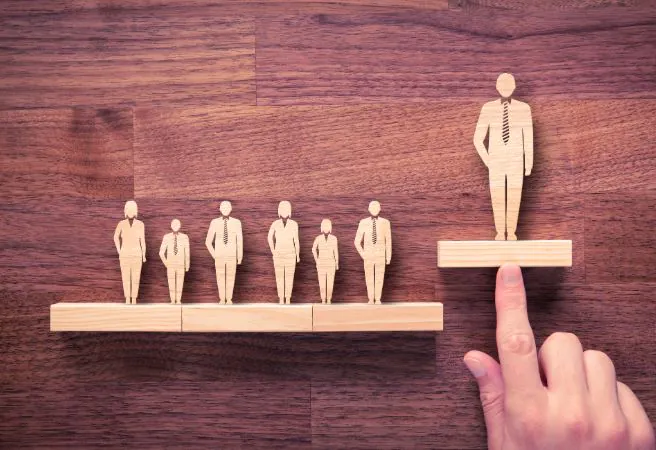Sustainability is a growing concern around the world, and many regulations, agreements, and targets have been put in place to reduce waste and cut down on emissions. Plastic is a frequent subject of these initiatives, as it typically does not biodegrade and therefore sits in landfills for decades, in addition to making its way to places like the ocean where it endangers wildlife and leaches microplastics into the environment.
With close to nine billion metric tons of plastic being produced since the 1950s and much of it never being properly recycled, sustainable plastic solutions are a growing concern. And the plastic that does get recycled still results in more plastic being produced and eventually thrown away: reusing plastic in new products requires some percentage of new material in order to produce something of acceptable quality for use. After being recycled a few times, the plastic’s quality is too low to be recycled again and it is eventually thrown out.
Plastic is a highly useful material for many applications. It’s waterproof and durable, and can be molded into a wide variety of shapes. Developing materials that can replace it without losing out on functionality can be challenging, and any one sustainable alternative typically cannot be used for the full range of applications that traditional plastics can. Companies are therefore hard at work developing both sustainable plastics and plastic substitutes in order to decrease environmental impact and to meet the growing public demand for such materials.
The European Union is one organization working to reduce plastic pollution and encourage the manufacture and use of sustainable products. The Union has issued a Single-Use Plastic (SUP) Directive in order to help cut down on waste. It forbids the sale of SUP products that have easily accessible, sustainable alternatives available, such as cutlery, straws, plates, and several other items. For other plastic products with less accessible substitutes, the EU is working to limit their use through methods such as new design requirements, labeling requirements about plastic content and its impact on the environment, and other measures. This combined with initiatives in other parts of the world as well as consumer demand for sustainable products is putting pressure on plastics manufacturers to develop materials that are more environmentally friendly.
Types of Sustainable Plastics
There are multiple ways in which plastics can be environmentally friendly — or at least more environmentally friendly than traditional plastics. Bio-sourced plastics are derived from plants rather than fossil fuels, while biodegradable plastics may still be made partly or entirely from petroleum but are designed to break down under specific circumstances, such as the application of heat, moisture, oxygen, and/or light. Because of this, biodegradable plastics have a more limited range of use, but are ideal for products such as plastic bags and plastic film, which together make up a significant percentage of plastic waste.
Bio-Sourced Plastics
Starch is a natural polymer that can be used in place of fossil fuels in the production of plastic. It can be sourced from many different plants, including potatoes, corn, and beets. Bio-sourced plastics are best used in applications that don’t have strict mechanical requirements, such as plastic packaging and bags. Types of bio-sourced plastics include PLA, TPS, and cellulose-based plastics.
Polylactic acid-based (PLA) plastic is completely renewable and biodegradable. It’s derived from lactic acid sourced from sugar cane or corn, and the resulting product has a high melting point, transparency, and high mechanical strength. However, PLA on its own is brittle and has poor impact strength, limiting the applications in which it can be used. Because of this, it may be combined with other sustainable materials in order to strengthen it. PLA is often used as filament for 3D printers, in plastic bottles, as food packaging, and in some medical devices.
Thermo-plastically modified starch blends (TPS) are developed from starch, water, and a plasticizer, as starch on its own will disintegrate in water and cannot be processed the way traditional plastics are. TPS can be combined with other plastics like PLA in order to compensate for each one’s deficiencies.
As cellulose is found in all plants, it is a very renewable polymer source. Cellulose-based plastics are made by heating materials such as wood pulp and cotton liners to extract cellulose fibers. These fibers are very sensitive to moisture, and therefore this type of plastic also benefits from being combined with PLA to improve its water resistance and create a stronger and more versatile product.
All of these bio-based plastics can be used for food-related applications such as packaging, utensils, and compostable bags. While they are typically more expensive than traditional plastics, their sustainable characteristics bring significant advantages in the face of factors such as EU regulations and consumer preferences.
Biodegradable Plastics
Traditional plastics can take hundreds or even thousands of years to biodegrade. This means there are many opportunities for biodegradable plastics to take their place and help reduce the amount of plastic waste in landfills, oceans, and elsewhere in the environment. Because these plastics are designed to break down under specific conditions, they can still be used in many common applications without failing, though they aren’t as versatile as traditional plastics.
Common types of biodegradable plastic include polybutylene adipate terephthalate (PBAT), polybutylene succinate (PBS), and polycaprolactone (PCL). PBAT breaks down in soil in about six weeks, but is made from non-renewable fossil fuel. PBS is made from glucose and fully biodegrades in under 4 months. PCL is a polyester and is easily moldable. It takes 2-3 years to biodegrade under the right conditions, and has many uses in the medical industry.
The Challenges and Drawbacks of Sustainable Plastics
While reducing reliance on fossil fuels and cutting down on plastic waste are both important goals, sustainable plastics still have their drawbacks. Because these plastics need to be treated in specific ways in order to break them down, they often require specialized recycling facilities. If they aren’t separated from traditional plastics before recycling, the result may be unusable as plastic and unable to break down properly, resulting in waste continuing to be sent to landfills. Many regions and countries don’t have the necessary infrastructure to sort and recycle these plastics. These plastics can also confuse consumers, who often don’t know how to properly dispose of them.
There are other factors that can make these plastics less sustainable than they seem. Their production encourages changes in land use in order to produce feedstock, such as clearing forests to make room for farms. This can have a negative environmental impact, and makes it important to consider the source of feedstock when making decisions about bio-sourced plastics.
Another potential environmental impact is the changes to manufacturing processes necessary to adapt to working with sustainable plastics. Lego, for example, recently decided to abandon its efforts to manufacture bricks from recycled PET. The changes to the company’s equipment would have led to a higher overall carbon footprint despite the benefits of using recycled material. As rPET is softer than ABS, which Lego uses for most of its bricks, it required other ingredients to make it a viable substitute, and these processes required significant amounts of energy. The company is therefore researching alternative ways to improve the sustainability of its products.
Lego sets an example for other manufacturers: just because one sustainable solution fails to meet the company’s requirements, doesn’t mean there isn’t a sustainable way forward. With many types of sustainable plastics available and continued R&D efforts to produce more and better plastics, there are many potential solutions to the problem of sustainability.



